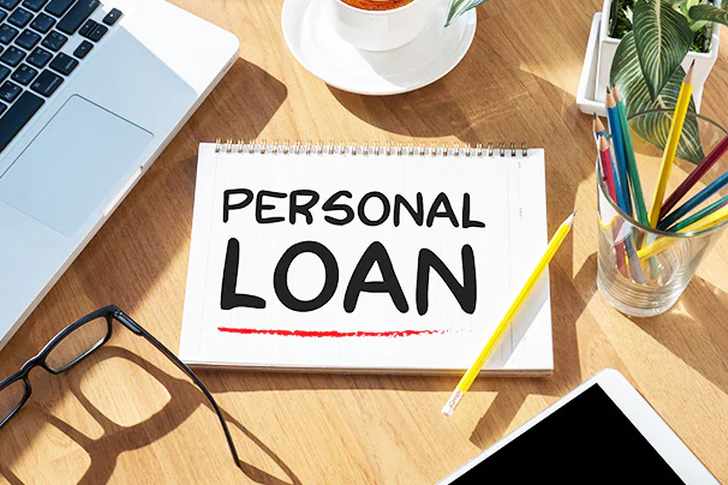A Comprehensive Guide to Personal Loans: How They Work and How to Choose the Right One
Personal loans can be a financial lifeline when you need extra cash for unexpected expenses, debt consolidation, home improvement, or even a major life event. Unlike other types of loans that are designed for specific purposes, such as mortgages or auto loans, personal loans offer flexibility, allowing you to use the funds however you need.

What is a Personal Loan?
A personal loan is a type of unsecured loan, meaning it does not require collateral, such as a car or house, to secure it. Personal loans are typically issued by banks, credit unions, and online lenders. Borrowers receive a lump sum of money that they repay over a set period, usually in fixed monthly payments with interest.
Personal loans can range from $1,000 to $100,000, depending on the lender and your creditworthiness. The interest rates vary, typically ranging from 5% to 36%, depending on factors like your credit score, income, and debt-to-income ratio.
Why Consider a Personal Loan?
Personal loans can be beneficial for a variety of reasons, and understanding their potential uses is key to determining if one is right for you.
- Debt Consolidation: One of the most common uses of personal loans is to consolidate high-interest debt, such as credit card balances. By combining multiple debts into a single loan with a lower interest rate, you can save money on interest and simplify your finances with one monthly payment.
- Home Improvement: Personal loans can be used to finance home renovations or repairs. Unlike home equity loans or lines of credit, which require you to use your house as collateral, personal loans are unsecured, so your property isn’t at risk if you default.
- Emergency Expenses: Whether it’s medical bills, car repairs, or an unexpected trip, personal loans can provide quick access to cash when you face urgent financial needs.
- Large Purchases: If you need to finance a big purchase—like a wedding, a vacation, or new appliances—a personal loan can help you spread the cost over time without dipping into your savings.
- Improving Credit Score: Taking out a personal loan and making consistent, on-time payments can help improve your credit score by diversifying your credit mix and showing a history of responsible borrowing.
The Pros and Cons of Personal Loans
Like any financial product, personal loans have advantages and disadvantages, which you should consider before applying.
Pros:
- No Collateral Required: Most personal loans are unsecured, meaning you don’t need to provide assets to qualify.
- Fixed Interest Rates and Payments: Most personal loans have fixed interest rates, so your monthly payments remain the same throughout the loan term, making budgeting easier.
- Flexible Use: Unlike loans with specific purposes (like car loans or mortgages), personal loans can be used for virtually any purpose.
- Debt Consolidation: Personal loans can help you pay off high-interest debts more efficiently by consolidating them into one lower-interest payment.
Cons:
- Higher Interest Rates for Poor Credit: If you have a low credit score, you may be charged a higher interest rate, which can make personal loans more expensive than other forms of credit.
- Fees: Some personal loans come with origination fees, which can range from 1% to 8% of the loan amount. Additionally, late fees and prepayment penalties can add to the cost.
- Debt Cycle Risk: Since personal loans provide quick access to cash, there’s a risk of falling into a cycle of debt if you borrow more than you can repay.
How to Choose the Right Personal Loan
Selecting the right personal loan requires careful consideration of several factors. Here are some tips to help you find a loan that meets your needs:
- Check Your Credit Score: Your credit score plays a significant role in determining whether you qualify for a personal loan and the interest rate you’ll be offered. A higher score typically means better terms, while a lower score may result in higher rates. Before applying, check your credit score and take steps to improve it if needed.
- Compare Interest Rates and Fees: Different lenders offer different interest rates, loan terms, and fees. Be sure to compare offers from multiple lenders to find the best deal. Look at the Annual Percentage Rate (APR), which includes both the interest rate and any fees, to get a true sense of the loan’s cost.
- Evaluate Repayment Terms: Loan terms typically range from 12 to 60 months. Shorter terms mean higher monthly payments but less interest paid overall, while longer terms offer lower payments but more interest. Choose a term that balances affordability with total interest paid.
- Consider the Lender’s Reputation: It’s essential to choose a reputable lender. Look for reviews and check the lender’s standing with the Better Business Bureau. Also, verify that the lender is transparent about fees and interest rates, and offers a straightforward application process.
- Understand the Loan Conditions: Carefully read the loan agreement, including any fine print, to understand the full scope of the loan’s terms. Pay attention to any penalties for prepayment or late payments.
Conclusion
A personal loan can be a powerful tool for managing your finances, whether you’re consolidating debt, covering emergency expenses, or making a significant purchase. However, it’s crucial to shop around, compare rates, and choose a loan that fits your financial situation. By understanding how personal loans work and taking the time to select the right lender, you can confidently use personal loans to achieve your financial goals.







Recent Comments